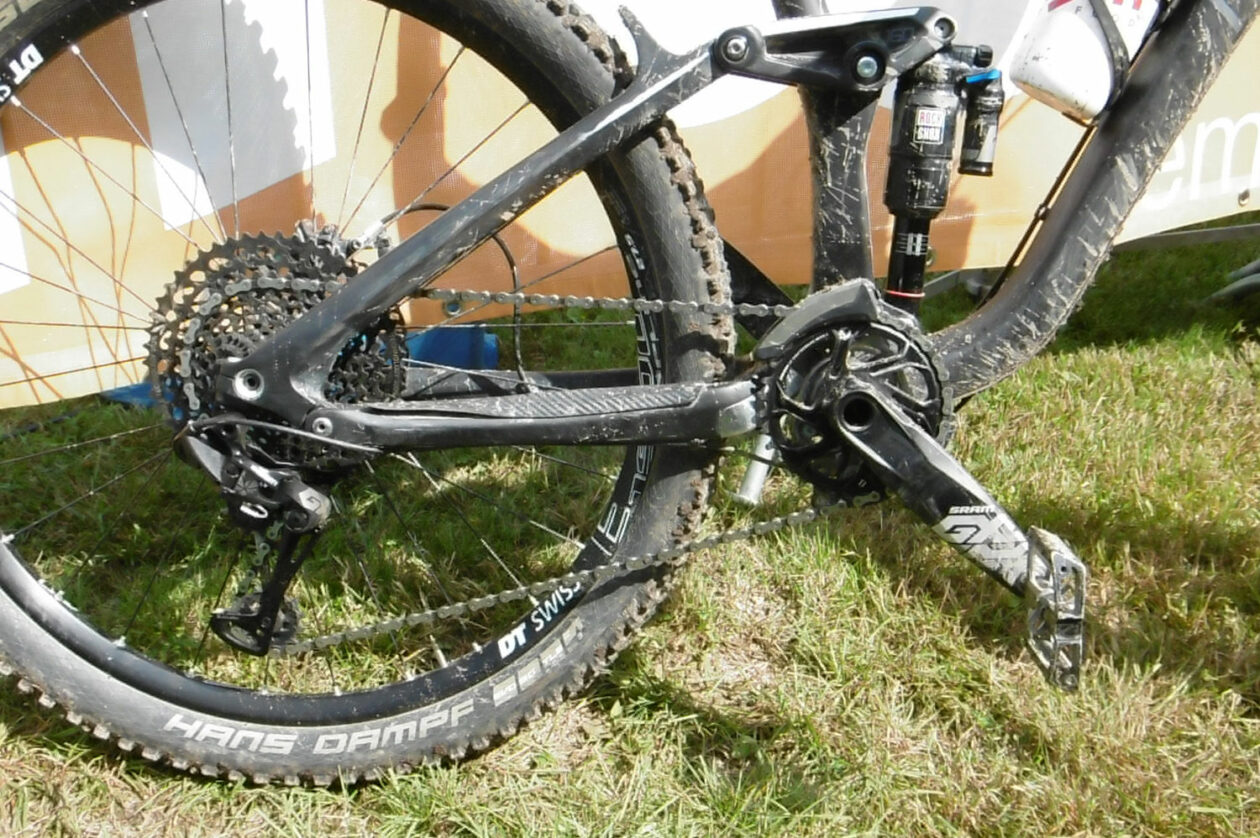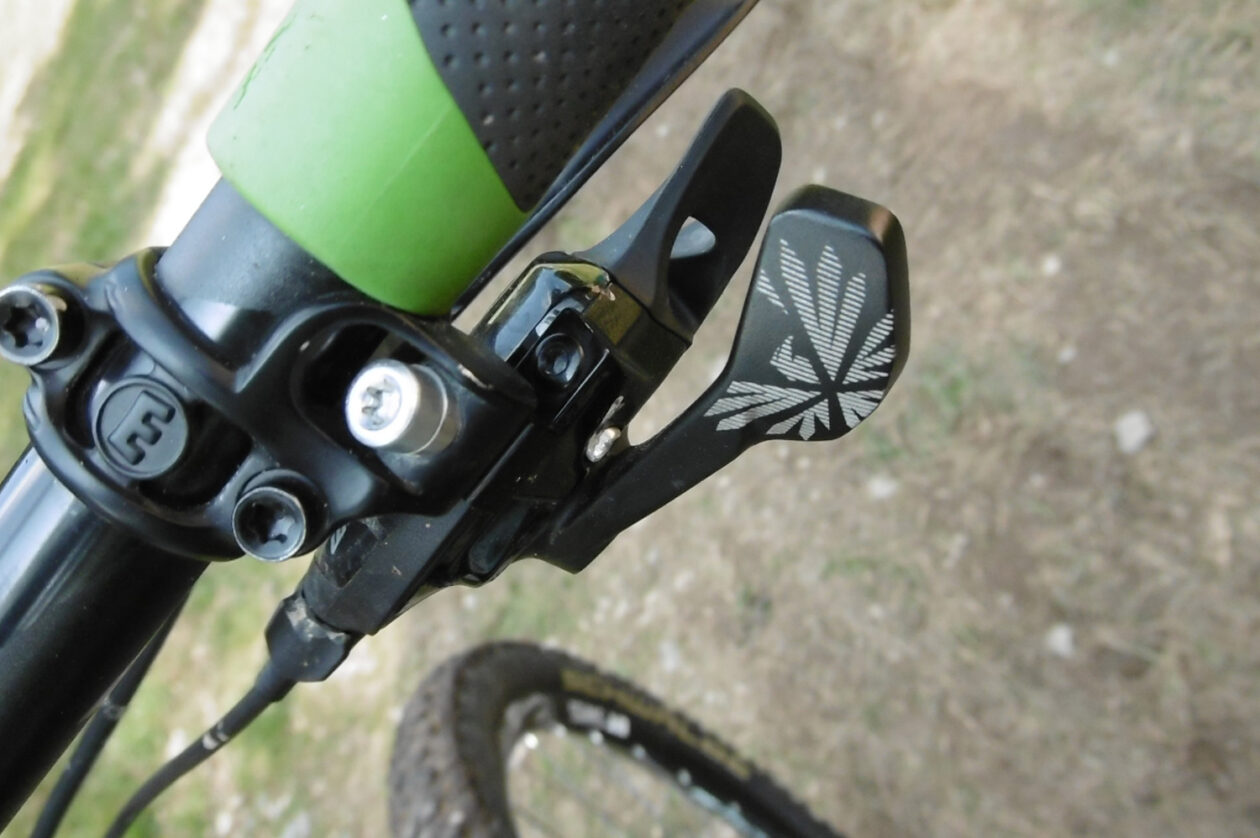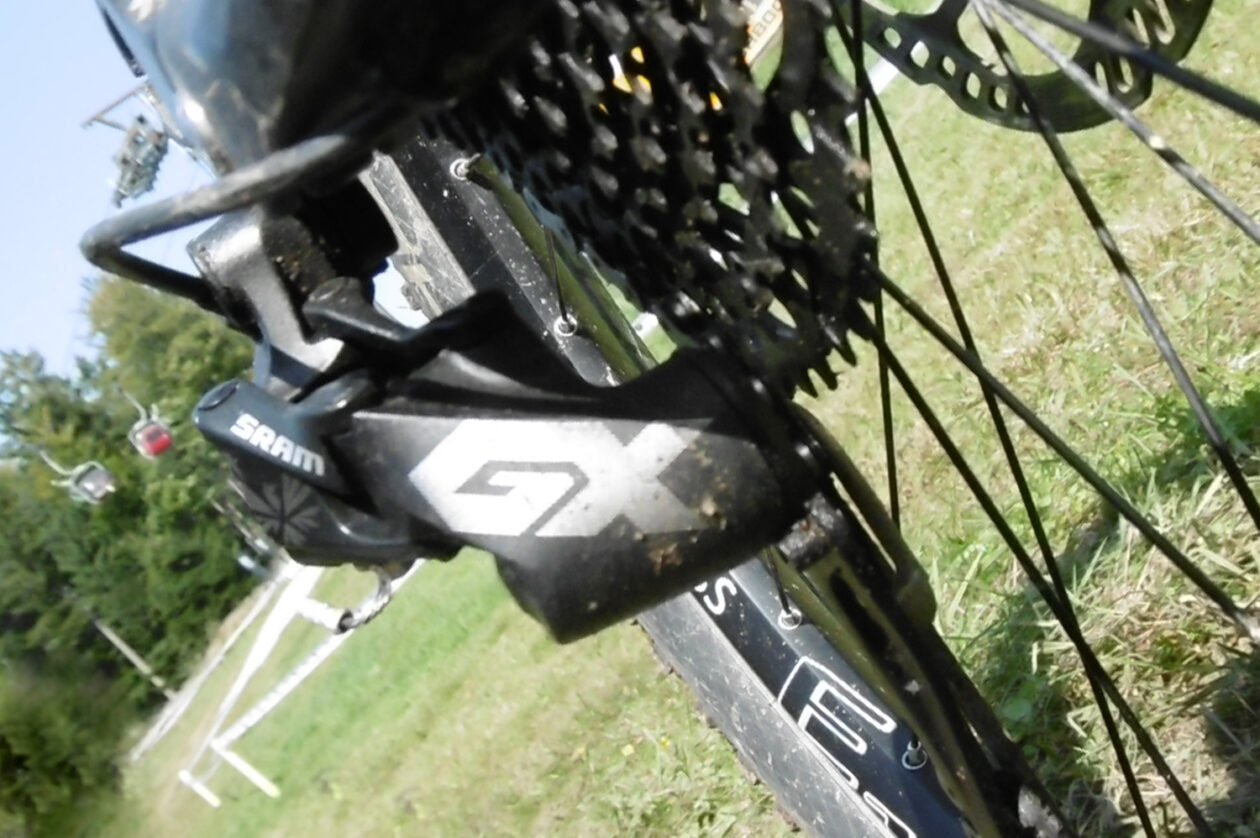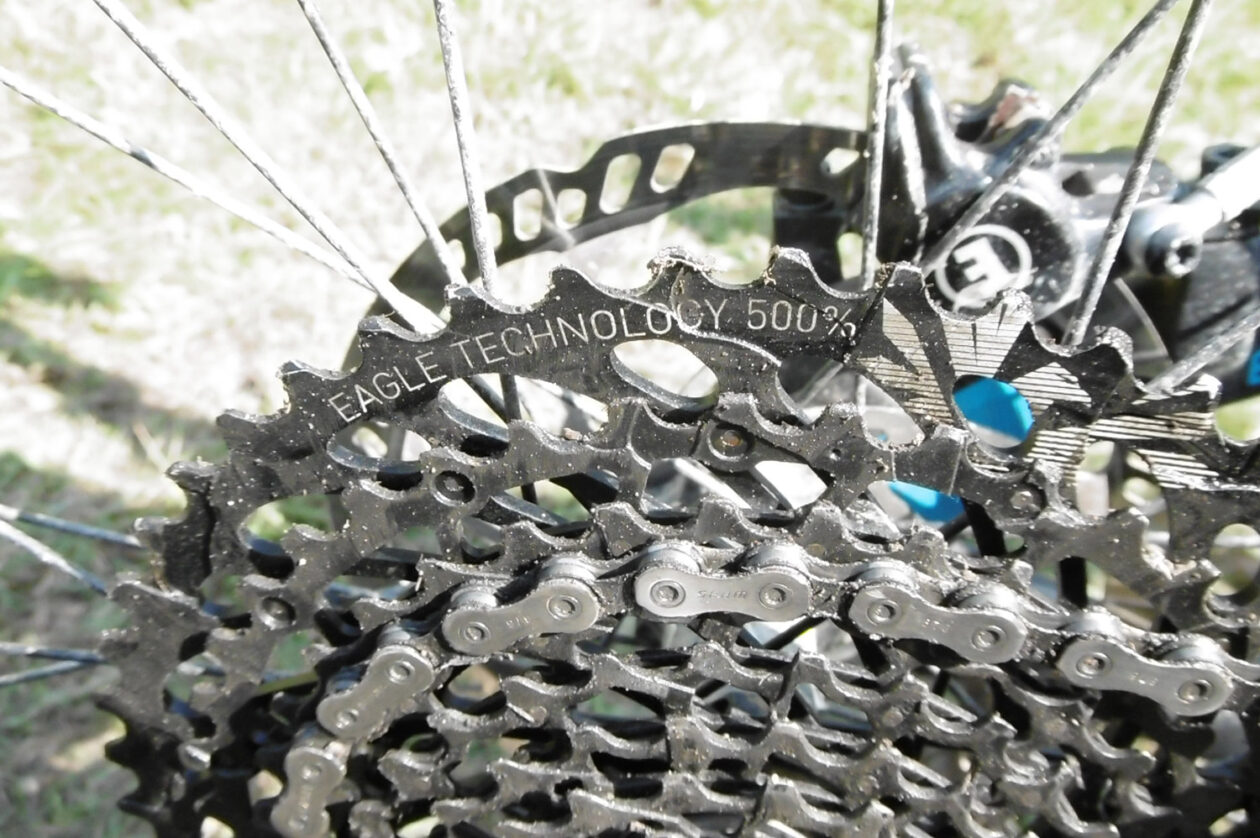Single chainring technology has long since arrived and is accepted in the MTB sport. That‘s reason enough to talk about this technology of the future and put it through its paces. You drove with at least two chainrings for decades — suddenly it’s only one.
Contents
At first glance
With the GX Eagle, SRAM has released a very powerful, reliable groupset at a fantastic price and made the entry into the 12-speed drivetrain more affordable. The main difference to its XO1 and X1 siblings lies in the materials used: the GX Eagle is made of aluminium, in contrast to the aluminium-carbon mix of its larger relatives — this becomes clear with the additional weight of 400g. However, it’s just as technically advanced. Processing and function are perfect for it‘s price and with the range increased to 500{09776a9e527fe6e7777aceefa8f4e2f820982470cae700a67e7c7fb2d68155cf}, the last problem of the single drive technology is solved. It’s quite clear that this is the future in the downhill and enduro sector, because the advantages outweigh those of double drives greatly.
Just a single chainring?
The deletion of the 2nd chainring counteracts the biggest problem during shifting: Changing the chainring is the weakest link in the system, especially off-road. It takes too long and carries the risk of interconnection — depending on the situation, it can become very unpleasant and definitely requires a moment of concentration and attention. Another advantage is the lower weight with just one chainring, no more front derailleurs, only one lever — all this has the nice side effect of a clean cockpit.
But of course, there’s also a catch: deleting a chainring naturally limits the range. For mountainbikers who are not so tech-savvy: The range indicates the difference between the smallest and the largest gear. The larger the range, the larger the amount of ridable gears.
400{09776a9e527fe6e7777aceefa8f4e2f820982470cae700a67e7c7fb2d68155cf} would mean that 4 times more distance is covered per crank rotation in the largest gear than in the smallest gear. A wide range gives the rider more possibilities when pedalling. This also makes it clear why a 12-speed drivetrain has advantages over 11-speed technology.
SRAM has long been at the forefront of 12-speed drivetrain technology. „Simplicity despite a high range“ — this sums up the approach of 12-speed drivetrain technology. And as far as that is concerned, 500{09776a9e527fe6e7777aceefa8f4e2f820982470cae700a67e7c7fb2d68155cf} are really something to be proud of (the range available with the GX Eagle). SRAM has significantly expanded its repertoire of 12-speed drivetrains this season and rapidly lowered the entry price for this technology with the GX Eagle. Reason enough to take a close look at the groupset. Bungi was kind enough to do that for us.
Bungi’s impressions
“I have been using the SRAM GX Eagle 1×12 for almost 3 months and have tested it extensively under various conditions! SRAM has released a very well processed and performance-oriented groupset at a top price. The difference to the XO1 and the X1 comes from the choice of materials used, which results in an additional weight of 400g. How important this is to you is the question here. With a downhill bike, 400g are certainly not as important as with a road bike weighing 8kg.
The gradation of the cassette (10t, 12t, 14t, 16t, 18t, 21t, 24t, 28t, 32t, 36t, 42t, 50t) and the design of the Eagle-specific X-SYNC-2 chainrings at the front have remained the same for all three groups. The supplied gradation makes sense and achieves the aforementioned 500{09776a9e527fe6e7777aceefa8f4e2f820982470cae700a67e7c7fb2d68155cf} gear range. This is the big difference to the 11-speed drivetrain group, which has a significantly smaller range of 420{09776a9e527fe6e7777aceefa8f4e2f820982470cae700a67e7c7fb2d68155cf}, which is noticeable. Personally, I was missing something with the 11-speed drivetrains. Plus, the gradation wasn‘t very good — I often had the feeling of hanging between the gears. That’s clearly a thing of the past!
The long cage, the large Pulleys and the SRAM Eagle- and GX-logos, which are kept in a discreet but chic grey, are directly noticeable on the rear derailleur. I‘m particularly enthusiastic about the high-quality workmanship. Some technologies from SRAM, which are already known, are used as well: e.g. Cage Lock and the X-Horizon technology, which limits the movement of the rear derailleur exclusively to the horizontal axis. The results are faster and more precise shifting operations. The steel-reinforced spring in the derailleur prevents chains from hitting the frame as well as ghost-shifting (chains falling down), even on the roughest trails — or when landing after a jump. Specially designed for the Eagle chain, the X-SYNC-2 chainrings increase chain tension while reducing wear, friction and noise. Therefore, the issue of chain misalignment is no longer a problem. This combination is really reliable and does a great job even under the hardest conditions.
The GX Eagle looks good, as well. Although the crank arms make a bulbous and heavy impression, they are perfectly trimmed for lightness and stability thanks to special recesses and reinforcements. The chainring is easily replaceable via the direct mount system. An important point, since this makes the orientation to the terrain and your own performance easier — because the roll length and transmission can be individually designed this way.
I use the SRAM trigger instead of the grip shift, because I have doubts about accidentally turning the grip shift when riding enduro or trail and being in the ‘wrong’ gear. A striking feature of the trigger is the SRAM Eagle logo placed on the lever. Switching is, as usual with SRAM, typically smooth.
The installation is easy to understand thanks to the instruction video provided by SRAM, which can be found below and makes it clear what you have to pay attention to. I have followed the instructions accurately in order to achieve the optimal basic setting! An incorrect distance causes the chain to jump between the sprockets. An incorrectly adjusted end stop can cause the chain to fall down. The SRAM Eagle adjusting tool is the best tool for this. ATTENTION: Be sure to let air out of the damper when adjusting. I adjusted my Eagle to the SAG (negative spring travel) I was using.
The SRAM GX Eagle does its job to your complete satisfaction! Whether at the Enduro race, where things are really rough, or in the bike park: the Eagle always convinces with a great performance. And I didn’t push it to the limit only once!
But the GX Eagle is also the ideal companion for the alpine tour with its range of 500{09776a9e527fe6e7777aceefa8f4e2f820982470cae700a67e7c7fb2d68155cf}! At the beginning I was sceptical whether the long rear derailleur arm would get stuck somewhere during the race — but this fear was unfounded, since it‘s very robust and well made! There’s nothing that could be bend.”
So, Bungi, is the GX Eagle worth it?
“SRAM really made a strong presentation! The performance of the GX Eagle doesn’t need to hide behind the XO1 or X1 — that’s really great and not a given! I don’t miss the 2-speed at all and will only use the GX Eagle with its 1×12-speed drivetrain technology in the future — in training as well as racing.
And the GX Eagle also has a clear advantage over the 1×11-speed drivetrain, as it benefits greatly from the increased range with the same functionality and mobility. SRAM has done everything right here, because sooner or later those who want to ride their bike in various areas will need a decent range. Therefore: The SRAM GX Eagle has convinced me entirely!”




